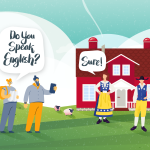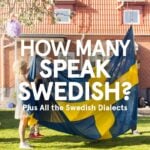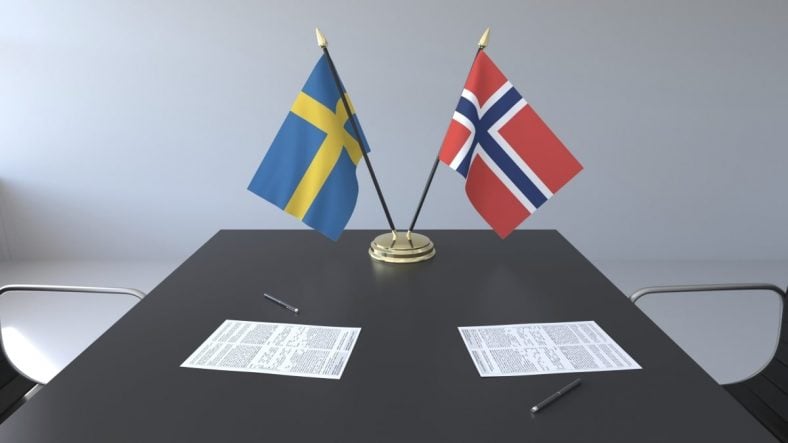When you’re deciding to learn a Scandinavian language the choice is usually between Swedish and Norwegian, as Danish is a lot harder to learn and understand. I’ve seen many who battle with this decision so I wanted to go through some areas that can help you choose.
I put my own biases aside and set out to look for relevant data from the Nordic region to find which language would be of most use to anyone who is looking to learn a Scandinavian language. I looked at which language was most widely understood in the Nordic region, most widely spoken natively, perceived as most beautiful, and most likely to lead to opportunities in general.
So which language should you learn, Swedish or Norwegian?
Swedish is the most useful Scandinavian language to learn as it’s the most widely understood among young Nordics, who also perceive it as the most beautiful language. Swedish also offers more opportunities to practice and utilize the language, with twice as many native speakers than any other Nordic language.
Norwegian is not far behind in usefulness though and is slightly easier to learn, but it comes in just behind Swedish in how widely understood it is in the Nordics and how beautiful it is perceived. There are plenty of lower-income Norwegian jobs for foreign workers, but ultimately there is only half the number of native speakers.
- So which language should you learn, Swedish or Norwegian?
- Why You Should Learn Swedish Instead of Norwegian
- 1. Swedish is understood by more young people in the Nordics
- 2. More people speak Swedish than any other language in the Nordics
- 3. There are more Swedish career opportunities than Norwegian
- 4. Swedish is perceived as the most beautiful Scandinavian language
- 5. Swedish is easy to learn for English speakers
Why You Should Learn Swedish Instead of Norwegian
1. Swedish is understood by more young people in the Nordics
Let’s take a look at which language would be of most use for you. Let’s assume that the most useful is the same as the one that is most widely understood. Over 2000 young people in the Nordic countries were recently asked how well they understand the different Nordic languages, and Swedish clearly stood out as the language most understood across the region.
“Which languages in addition to the main national language do you speak and/or write?”
Source: Nordic Council 2021
19% of young Nordics answered that they speak and/or write Swedish in addition to their main national language, compared to Norwegian at 6% and Danish at 4%.
Swedish being more widely spoken among the younger Nordic population is influenced by Finland having a Swedish-speaking minority as well as Swedish as a recognized minority language, but also the relatively high number of Swedish speakers in both Norway and Denmark.
In comparison, only 7% and 2% of Swedes claim to speak and/or write Norwegian and Danish respectively.
2. More people speak Swedish than any other language in the Nordics
There are about 10 million people speaking Swedish natively, which is the most out of all the Nordic languages. Having more native speakers, you’ll likely find more opportunities for expats and foreigners in general with Swedish, compared to any of the other Nordic languages.
With more Swedish native speakers you’ll have more opportunities to practice, learn, and use the language, you will be more likely to find learning resources, and you’ll likely find more media you can consume such as tv series, movies, and books.
| Language | Native speakers |
|---|---|
| Swedish | 9 629 000 |
| Danish | 5 480 000 |
| Finnish | 5 413 000 |
| Norwegian | 5 266 000 |
| Faroese | 75 000 |
| Greenlandic | 55 000 |
| Sami | 25 000 |
3. There are more Swedish career opportunities than Norwegian
Sweden has plenty of multinational businesses such as Volvo, IKEA, H&M, Spotify, or Ericsson offering an unusually (for the region) high amount of career opportunities for expats, making it a good choice for professionals looking to relocate or look for jobs abroad.
Number of English-speaking jobs available
Source: Glassdoor & LinkedIn 2021
Looking at the number of English-speaking jobs available in each country, at the time of writing there are 569 in Sweden and 88 in Norway listed on Glassdoor, and 302 in Stockholm (capital of Sweden) compared to 53 in Oslo (capital of Norway) listed on LinkedIn.
This should give a good idea of how many job opportunities there are for foreign workers in each respective country (even though your goal of course would be to find any type of job, not just English-speaking ones).
4. Swedish is perceived as the most beautiful Scandinavian language
A group of mixed Scandinavian students studying abroad at a Scandinavian language school was asked how they thought each Scandinavian language sounded, and overall they thought Swedish sounded best, followed by Norwegian, Finland-Swedish, and Danish.
78.2% of respondents described Swedish as sounding “very nice”, 13% thought it sounded “average”, and finally 4.3% described Swedish as sounding “very ugly”. The Norwegian language sounded slightly more average to the respondents, with 60.8% saying it sounded “very nice”, 26.1% “average”, and 8.7% “very ugly”.
“How do you think other Scandinavian languages sound?”
Source: Nordisk grannspråksförståelse i en skandinavisk skola utomlands, Hidayet Yalcin 2015
Although the sample size was quite small in the study, my general experience is that these preferences are largely mirrored in the general Scandinavian population. Swedes and Norwegians do not find Danish very beautiful, whereas both Swedish and Norwegian respectively are generally well-liked in the other two Scandinavian countries.
5. Swedish is easy to learn for English speakers
This one goes in both languages’ favor, to be fair. The Scandinavian languages (Swedish, Danish, and Norwegian) are all comparably easy to learn for an English speaker, as they are also part of the Germanic language group, and considered Category 1 languages according to FSI (meaning they would take around 23-24 weeks to reach fluency).
Norwegian and Swedish specifically were ranked as the easiest and second easiest language to learn when language-learning resource Babbel ranked the easiest languages to learn for English-speakers, making them a perfect choice for someone who wants to dabble with a second (or third) language.
Sources:
https://portal.research.lu.se/portal/files/5905032/625654.pdf
http://www.let.rug.nl/gooskens/project/pdf/publ_Schueppert_et_al._2012c.pdf
https://nordeniskolen.org/sv/spraak-kultur/7-10-klass/de-nordiska-spraaken/om-danska/
https://www.optilingo.com/blog/norwegian/which-scandinavian-language-is-easy-to-learn/
https://www.worlddata.info/languages
https://pub.norden.org/nord2021-004/
https://uu.diva-portal.org/smash/get/diva2:824233/FULLTEXT01.pdf
https://www.babbel.com/en/magazine/easiest-languages-for-english-speakers-to-learn
 Nordic and Scandinavian Languages Explained and Ranked
Nordic and Scandinavian Languages Explained and Ranked How Nordic People Understand & Talk To Each Other (+ Graphs)
How Nordic People Understand & Talk To Each Other (+ Graphs) Can You Get By With English Only In the Nordic Countries?
Can You Get By With English Only In the Nordic Countries? How Many People Speak Swedish and Its’ Different Dialects? (Stats)
How Many People Speak Swedish and Its’ Different Dialects? (Stats)


